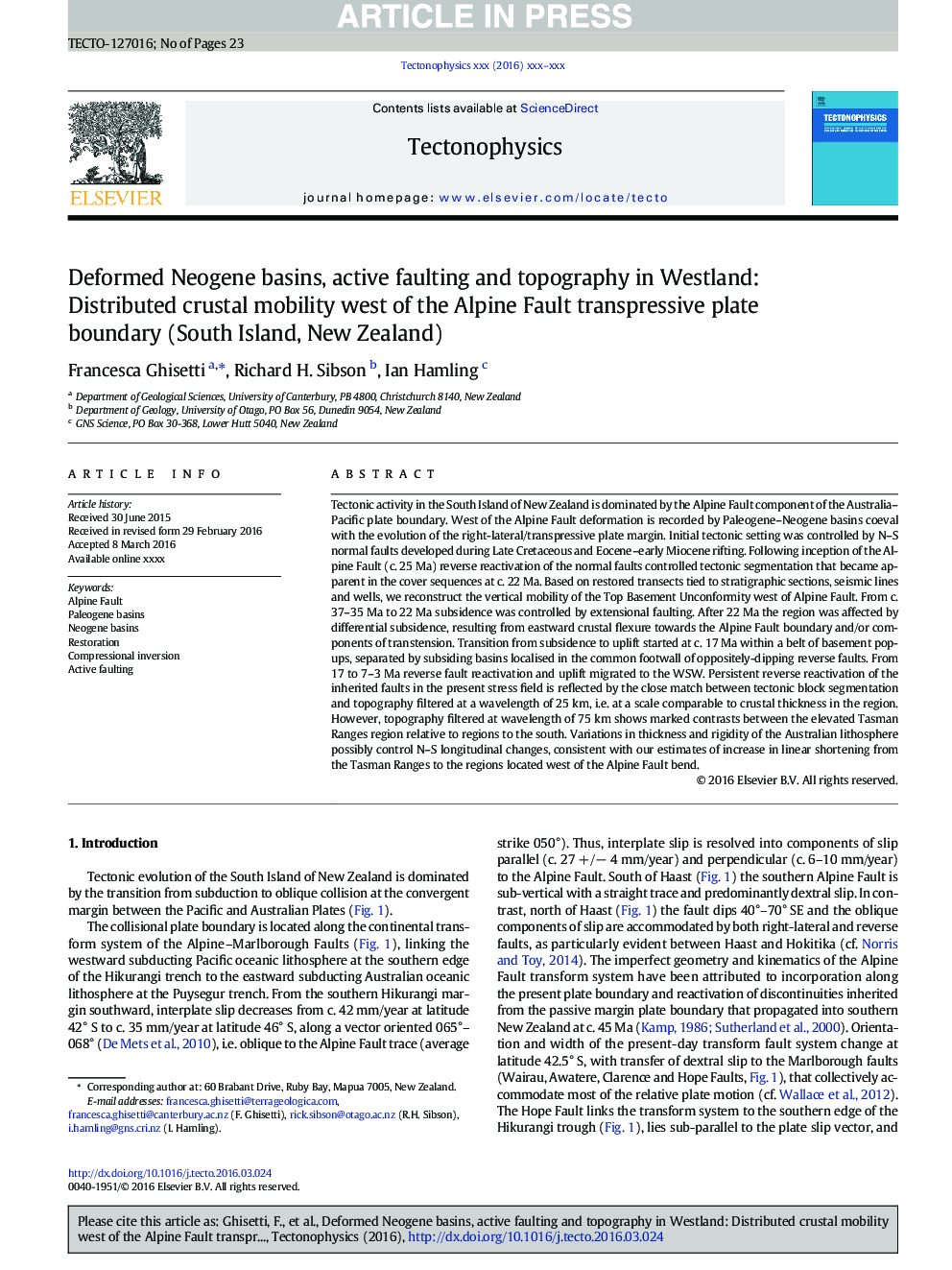| کد مقاله | کد نشریه | سال انتشار | مقاله انگلیسی | نسخه تمام متن |
|---|---|---|---|---|
| 5781769 | 1413898 | 2016 | 23 صفحه PDF | دانلود رایگان |
عنوان انگلیسی مقاله ISI
Deformed Neogene basins, active faulting and topography in Westland: Distributed crustal mobility west of the Alpine Fault transpressive plate boundary (South Island, New Zealand)
دانلود مقاله + سفارش ترجمه
دانلود مقاله ISI انگلیسی
رایگان برای ایرانیان
کلمات کلیدی
موضوعات مرتبط
مهندسی و علوم پایه
علوم زمین و سیارات
فرآیندهای سطح زمین
پیش نمایش صفحه اول مقاله

چکیده انگلیسی
Tectonic activity in the South Island of New Zealand is dominated by the Alpine Fault component of the Australia-Pacific plate boundary. West of the Alpine Fault deformation is recorded by Paleogene-Neogene basins coeval with the evolution of the right-lateral/transpressive plate margin. Initial tectonic setting was controlled by N-S normal faults developed during Late Cretaceous and Eocene-early Miocene rifting. Following inception of the Alpine Fault (c. 25Â Ma) reverse reactivation of the normal faults controlled tectonic segmentation that became apparent in the cover sequences at c. 22Â Ma. Based on restored transects tied to stratigraphic sections, seismic lines and wells, we reconstruct the vertical mobility of the Top Basement Unconformity west of Alpine Fault. From c. 37-35Â Ma to 22Â Ma subsidence was controlled by extensional faulting. After 22Â Ma the region was affected by differential subsidence, resulting from eastward crustal flexure towards the Alpine Fault boundary and/or components of transtension. Transition from subsidence to uplift started at c. 17Â Ma within a belt of basement pop-ups, separated by subsiding basins localised in the common footwall of oppositely-dipping reverse faults. From 17 to 7-3Â Ma reverse fault reactivation and uplift migrated to the WSW. Persistent reverse reactivation of the inherited faults in the present stress field is reflected by the close match between tectonic block segmentation and topography filtered at a wavelength of 25Â km, i.e. at a scale comparable to crustal thickness in the region. However, topography filtered at wavelength of 75Â km shows marked contrasts between the elevated Tasman Ranges region relative to regions to the south. Variations in thickness and rigidity of the Australian lithosphere possibly control N-S longitudinal changes, consistent with our estimates of increase in linear shortening from the Tasman Ranges to the regions located west of the Alpine Fault bend.
ناشر
Database: Elsevier - ScienceDirect (ساینس دایرکت)
Journal: Tectonophysics - Volume 693, Part B, 14 December 2016, Pages 340-362
Journal: Tectonophysics - Volume 693, Part B, 14 December 2016, Pages 340-362
نویسندگان
Francesca Ghisetti, Richard H. Sibson, Ian Hamling,